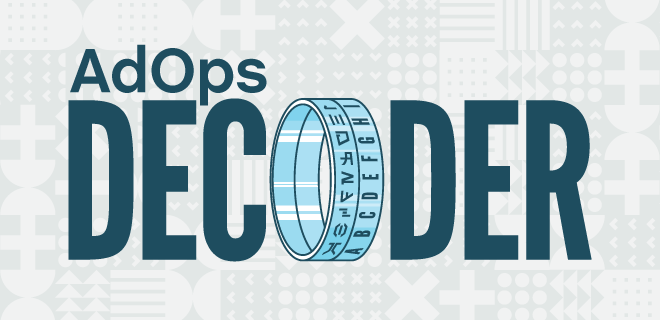
The role of mediation is evolving.
As app developers juggle an ever-increasing list of considerations — such as the user experience, revenue goals, multiple types of demand sources, and more — the importance of reliable and flexible mediation tech is more important than ever.
Originally, ad mediation emerged to help publishers optimize their revenue more effectively, but the first generation of mediation often left monetization teams with more questions than answers.
As the tech has advanced and publisher needs have become more complex, let’s revisit mediation: how it works, why it’s important, and what publishers should look for. Let’s dive in.
How Mediation Works
At its core, ad mediation seeks to optimize ad revenue. At its best, mediation finds the best result for all sides of the advertising ecosystem: the publisher, the advertiser, and the end user. It does this by assessing in real-time which ad opportunity among a set of demand sources will yield the best result at that moment for that user. This drives higher eCPMs for the publisher, more relevant and enjoyable ads for the user, and better campaign performance for the advertiser.
Open and unbiased auctions put the publisher in the driver’s seat, providing them with the controls and transparency required to optimize across waterfalls, ad lines, and various demand sources
This optimization is managed by an auction process, which can vary from one mediation platform to another. Among these, open and unbiased auctions put the publisher in the driver’s seat, providing them with the controls and transparency required to optimize across waterfalls, ad lines, and various demand sources.
Further optimization is achieved when the ad mediation platform provides robust tools with options for creating user cohorts, placement settings, and demand integrations.
These mechanisms empower monetization teams to choose the users who will view different types of ads, when, and from which ad partners. In so doing, apps can optimize average revenue per daily active user (ARPDAU) while minimizing churn or cannibalization.
Why Mediation Is Important
Ad mediation can deliver optimal ad revenue for app publishers while respecting all other publisher KPIs and commitments. Moreover, it can do this while saving monetization teams countless hours each week, allowing them to focus on more meaningful projects.
Mediation offers a more dynamic approach to optimization for publishers still reliant on ad monetization waterfalls.
Depending on the mediation solution chosen —, this can work across all demand source types, creating a more competitive, and thus more lucrative, revenue ecosystem for the app. As more publishers begin to spin up their ad sales teams, the ability for demand diversity in ad mediation is more important than ever.
When mediation systems are transparent, flexible, and neutral, app publishers can truly maximize ad revenue.
For publishers concerned about cannibalizing their users — particularly those with the highest lifetime value (LTV) — the user segmentation options within mediation tools can provide a powerful and much-needed degree of control. By dynamically cohorting users based on parameters set at the mediation layer, monetization teams can automatically optimize advertising ARPDAU without exposing high-value users to competitors’ ads.
App publishers can maximize ad revenue when mediation systems are transparent, flexible, and neutral.
What Publishers Need
Ad mediation is best when it empowers the app publisher and values the user experience at its core. To this end, publishers must seek several key elements from their mediation tech solution, whether they build it themselves, rely on a third-party managed solution, or leverage a customizable mediation-as-a-service solution (like InMobi’s Meson).
First, publishers need absolute transparency in the mediation process. No auction dynamics should be obfuscated, and pricing must be upfront and clear. This allows the monetization team to make informed decisions on monetization settings and fairly assess business costs with each partner.
Moreover, without transparency, publishers cannot verify that the mediation tech is working in the publishers best interest. Thus, it’s no surprise that in a recent Advertising Perceptions study, the lack of transparency offered by many mediation companies was a top concern for 22% of publishers.
Second, publishers need unmitigated control. Every app is unique, and maximizing monetization for many user types requires granular control mechanisms.
Indeed, 76% of publishers report that they would rather pay for greater control over their mediation than rely on a free tool with limited options. In this pursuit, publishers should ensure that their mediation solution allows for user segmentation based on user behavior, context, demographics, and other custom parameters.
Third, publishers need flexibility. Demand sources and preferences vary by app, and mediation solutions must be able to accommodate them. To this end, publishers should verify that their mediation tech allows them to choose which demand partners and third-party vendors they work with.
While some vendors may have native integrations with the mediation tech, it’s equally important that the publisher create their own adapters and connect any other demand source of their choice.
What’s Next in Mediation
To attain the control, flexibility, and transparency needed for ad monetization, many publishers are revisiting their approach to mediation. Indeed, during a recent webinar on the future of monetization, predictions emphasized the importance of ad relevance, publisher control, and building trust with ad tech vendors.
This aligns with a recent Advertiser Perceptions study of over 100 top mobile publishers, wherein a majority of publishers (55%) expressed concern about the lack of control provided by their current mediation solution, and half (50%) were frustrated by an overall lack of transparency.
Given the complexity of building mediation from scratch and the need for transparency and control, we expect to see the rise of mediation-as-a-service solutions like Meson. Indeed, among publishers without their own mediation platform, 73% would prefer to manage their mediation in-house, provided an outside tech company handled the infrastructure.
No matter how monetization teams integrate ad meditation into their tech stack, one thing is sure: publishers can make growth happen in 2023 if they allow transparency, flexibility, and control to empower them.